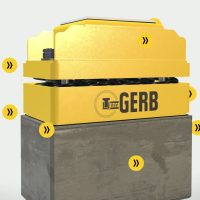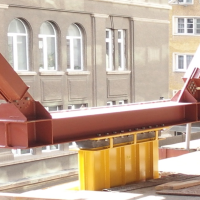
Blog Archive - Categories
In our blog you can find out what is coming up at GERB in the near future and
what has been going on in the past few weeks.
Here we want to keep you informed about events and promotions – feel free to browse!

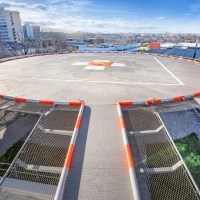

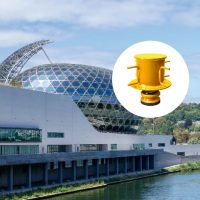
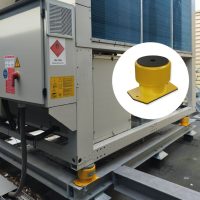


Video Documentary: Elastic Support & Damping Systems in Gösgen Nuclear Power Plant
The Gösgen Nuclear Power Plant in Switzerland provides a good example of long-term use of elastic support and damping systems for various key components in nuclear power generating plants.
During the operation of machines such as turbines, pumps and other rotating equipment, disturbing vibrations can affect other parts in the nuclear power plant. Vibration isolation technologies suppress these disturbing effects and can be installed as elastic support systems. These technologies can also be integrated for special protection of the installed safety systems to protect from external loads such as earthquakes, aircraft impact scenarios or the risk of possible foundation settlements.
Together with the team in Gösgen, we took a look at the elastic support systems that have been installed over the past decades and representatives of the operator gave some statements about their corresponding experience.
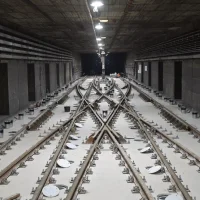
Floating Slab Track (FST) for Hamburg underground metro system
Extension of subway line U4 in Germany‘s second largest city Hamburg.
When completed by the end of 2026, 13,000 Hamburg residents will be able to reach the city center by public transport with almost half the
travel time. In order for the line to be extended by two additional stops (Stoltenstraße and Horner Geest), the U4 must be branched off north. The extension of the line will take place in the immediate vicinity of the populated city center.
The underground network is operated by Hamburger Hochbahn AG, one of the biggest transport companies in Germany with over a 100 years of experience.
Blog – Archive
In our blog you can find out what is coming up at GERB in the near future and
what has been going on in the past few weeks.
Here we want to keep you informed about events and promotions – feel free to browse!







Video Documentary: Elastic Support & Damping Systems in Gösgen Nuclear Power Plant
The Gösgen Nuclear Power Plant in Switzerland provides a good example of long-term use of elastic support and damping systems for various key components in nuclear power generating plants.
During the operation of machines such as turbines, pumps and other rotating equipment, disturbing vibrations can affect other parts in the nuclear power plant. Vibration isolation technologies suppress these disturbing effects and can be installed as elastic support systems. These technologies can also be integrated for special protection of the installed safety systems to protect from external loads such as earthquakes, aircraft impact scenarios or the risk of possible foundation settlements.
Together with the team in Gösgen, we took a look at the elastic support systems that have been installed over the past decades and representatives of the operator gave some statements about their corresponding experience.

Floating Slab Track (FST) for Hamburg underground metro system
Extension of subway line U4 in Germany‘s second largest city Hamburg.
When completed by the end of 2026, 13,000 Hamburg residents will be able to reach the city center by public transport with almost half the
travel time. In order for the line to be extended by two additional stops (Stoltenstraße and Horner Geest), the U4 must be branched off north. The extension of the line will take place in the immediate vicinity of the populated city center.
The underground network is operated by Hamburger Hochbahn AG, one of the biggest transport companies in Germany with over a 100 years of experience.
Blog Archive –
Categories
In our blog you can find out what is coming up at GERB in the near future and
what has been going on in the past few weeks.
Here we want to keep you informed about events and promotions – feel free to browse!







Video Documentary: Elastic Support & Damping Systems in Gösgen Nuclear Power Plant
The Gösgen Nuclear Power Plant in Switzerland provides a good example of long-term use of elastic support and damping systems for various key components in nuclear power generating plants.
During the operation of machines such as turbines, pumps and other rotating equipment, disturbing vibrations can affect other parts in the nuclear power plant. Vibration isolation technologies suppress these disturbing effects and can be installed as elastic support systems. These technologies can also be integrated for special protection of the installed safety systems to protect from external loads such as earthquakes, aircraft impact scenarios or the risk of possible foundation settlements.
Together with the team in Gösgen, we took a look at the elastic support systems that have been installed over the past decades and representatives of the operator gave some statements about their corresponding experience.

Floating Slab Track (FST) for Hamburg underground metro system
Extension of subway line U4 in Germany‘s second largest city Hamburg.
When completed by the end of 2026, 13,000 Hamburg residents will be able to reach the city center by public transport with almost half the
travel time. In order for the line to be extended by two additional stops (Stoltenstraße and Horner Geest), the U4 must be branched off north. The extension of the line will take place in the immediate vicinity of the populated city center.
The underground network is operated by Hamburger Hochbahn AG, one of the biggest transport companies in Germany with over a 100 years of experience.

